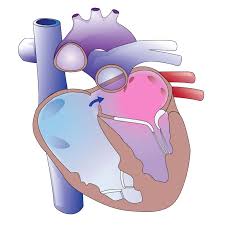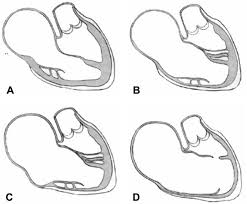

If you child has had these symptoms, contact your doctor. Infants may be unusually fussy or have other symptoms that can't easily be connected with rapid heart rhythm. Sometimes this is associated with fainting, dizziness, lightheadedness or chest discomfort. An episode of SVT may cause palpitations (older children may feel your heart racing). What problems might my child have?Ĭhildren with Ebstein's anomaly may have a rapid heart rhythm called supraventricular tachycardia (SVT) often as a result of a condition called Wolff-Parkinson-White syndrome (WPW). Ask your child's cardiologist which activities are appropriate. Your cardiologist may recommend avoiding certain intense competitive sports. If valve leakage is mild and tests show no abnormal heart rhythms, your child can usually participate in most sports. What activities will my child be able to do? Besides getting information from routine exams, the cardiologist may use tests such as electrocardiograms, Holter monitor and echocardiograms. What ongoing care will my child need?Ĭhildren with Ebstein's anomaly should receive continued care from a pediatric cardiologist. Then it's replaced with an artificial valve. In some cases the tricuspid valve can't be adequately repaired. If there's an ASD, it's usually closed at the same time. The valve can't be made normal, but often surgery significantly reduces the amount of leaking. The most common involves a repair of the tricuspid valve. Several different operations have been used in patients with Ebstein's anomaly. But sometimes the tricuspid valve leaks severely enough to result in heart failure or cyanosis. More information for parents of children with Ebstein's anomaly Can it be repaired?Įbstein's anomaly is mild in many children that they don't need surgery. This syndrome also is commonly seen with an atrial septal defect, or ASD (or a hole in the wall dividing the two upper chambers of the heart). Blood may leak back from the lower to upper chambers on the right side of the heart. 2008 May 135(5):1120-36, malformed heart valve that does not properly close to keep the blood flow moving in the right direction. Brown ML, Dearani JA, Danielson GK, Cetta F, Connolly HM, Warnes CA, Li Z, Hodge DO, Driscoll DJ Mayo Clinic Congenital Heart Center. The outcomes of operations for 539 patients with Ebstein anomaly. J Thorac Cardiovasc Surg.Park SJ, Chung S, On YK, Kim JS, Yang JH, Jun TG, Jang SY, Lee OJ, Song J, Kang IS, Huh J. Fragmented QRS complex in adult patients with Ebstein anomaly and its association with arrhythmic risk and the severity of the anomaly. Circ Arrhythm Electrophysiol.Kastor JA, Goldreyer BN, Josephson ME, Perloff JK, Scharf DL, Manchester JH, Shelburne JC, Hirshfeld JW Jr. Electrophysiologic characteristics of Ebstein’s anomaly of the tricuspid valve. Circulation.Ebstein Anomaly With QRS Fragmentation on Electrocardiogram. J Investig Med High Impact Case Rep. Wolff-Parkinson-White syndrome can be associated with Ebstein’s anomaly due to accessory atrioventricular bypass tracts and re-entrant supraventricular tachycardia. Those with increased QRS duration have a higher mortality on long term follow up after corrective surgery. QRS duration is longer in those with fQRS. The extend of fragmented QRS is measured by the number of leads showing the fQRS. They also had more severe tricuspid regurgitation. Fragmented QRS is associated with a higher arrhythmic risk and larger atrialized right ventricular area. Intracardiac mapping has demonstrated late depolarization during this period.

They carry a risk of stroke because of potential paradoxical embolism due to intermittent right to left shunting across a patent foramen ovale.Įarlier the descriptions for the QRS abnormality in Ebstein’s anomaly were splintered QRS, fractionated QRS, or second QRS.

They are also more prone for atrial arrhythmias due to dilated right atrium. A portion of the right ventricle is atrialized because of distal displacement of the septal and posterior leaflets of tricuspid valve. Peaked P waves indicate a right atrial abnormality, though the typical voltage criteria for right atrial enlargement (more than 0.25 mV) is not satisfied.įragmented QRS occurs in Ebstein’s anomaly due to abnormal conduction in the atrialized right ventricle. ECG in Ebstein’s anomaly of tricuspid valveĮCG in Ebstein’s anomaly of tricuspid valve showing right axis deviation of QRS, notched R waves in II, III, aVF and V1 suggesting fragmented QRS.


 0 kommentar(er)
0 kommentar(er)
